Eighty percent (80%) of consumers rely heavily on their devices to find services nearby. From searching for the nearest cafe to locating a popular restaurant, location signals influence almost every purchase decision. Businesses that recognize this trend gain an advantage by refining how they appear in local searches and digital maps. This is where geolocation optimization becomes essential.
- Why Geolocation Optimization Matters for Businesses
- Types of Geolocation Data
- The Core Tactics of Geolocation Marketing
- Top Benefits of Geolocation Optimization for Businesses
- Essential Components of a Geolocation Optimization Strategy
- How to Implement Geolocation Optimization: Practical Steps
- Get Your Geolocation Optimization With DMP
- Quick FAQ Section: Geolocation Optimization
It is not just about being visible online—it is about reaching the right people at the right place and time. Leveraging location-driven search behavior helps businesses increase engagement, boost conversion rates, and achieve more efficient advertising results.
Why Geolocation Optimization Matters for Businesses
Geolocation optimization refers to refining digital assets to respond to a user’s geographical position. This process involves using location-based data collected from devices and online interactions to provide content, services, or advertisements tailored to a user’s location.
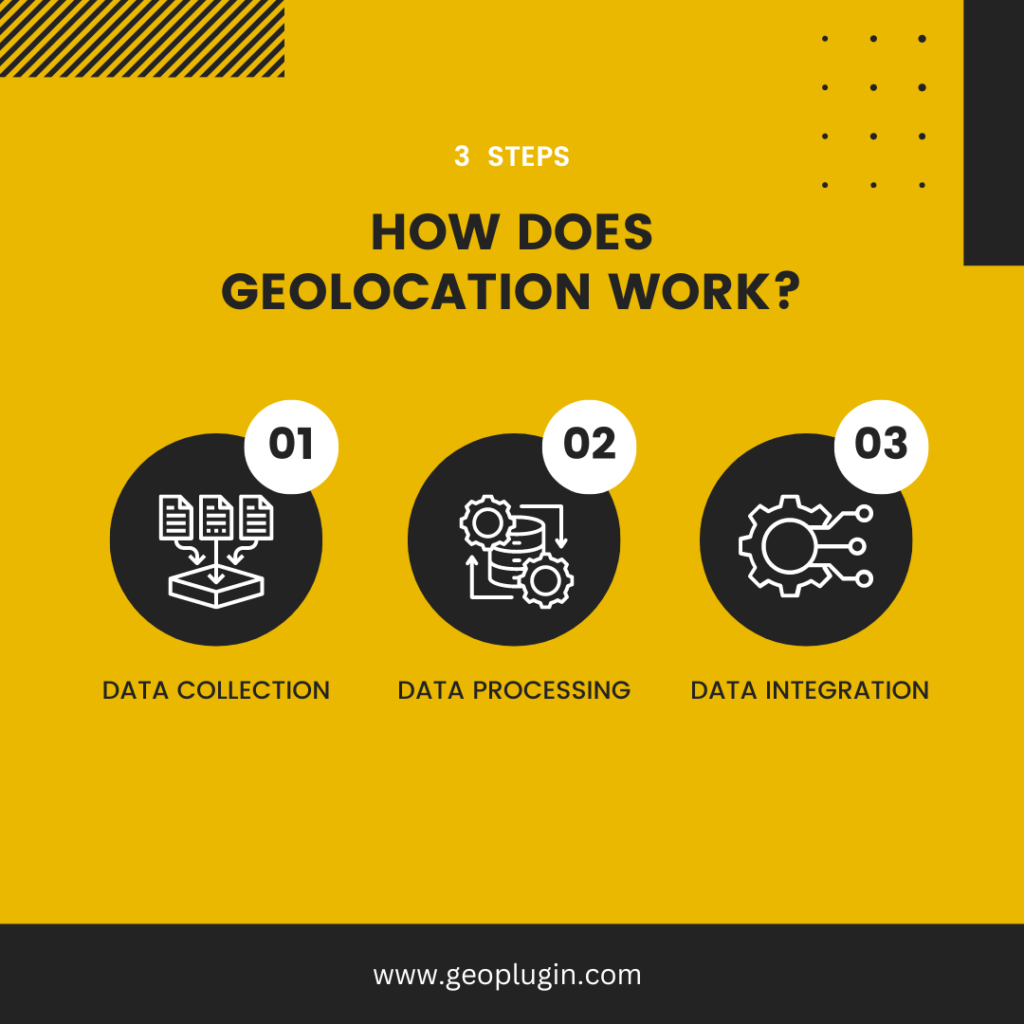
Image from GeoPlugin
In the digital marketing landscape, geolocation optimization has become a pivotal strategy for brands aiming to enhance their online visibility and reach local audiences, especially since 91% of consumers search for local businesses.
Types of Geolocation Data
Different technologies are used to collect and refine this location data, including:
- Internet Protocol (IP) Address – Provides an approximate location based on a user’s network connection. While less accurate, it can indicate the user’s city, region, or general area.
- Global Positioning Systems (GPS) Data – Deliver precise latitude and longitude information from smartphones and GPS-enabled devices, supporting highly targeted campaigns.
- Wi-Fi Positioning – Pinpoints location using nearby Wi-Fi networks, particularly useful indoors where GPS signals may be limited.
Combining these sources allows businesses to deliver personalized marketing messages that resonate with users in specific areas.
The Core Tactics of Geolocation Marketing
While geolocation uses physical location signals to connect businesses with people that is within their vicinity, there are several ways to apply it more effectively. These methods make it possible to reach the potential customer, strengthen engagement, and build a stronger community presence. Some of the most practical approaches include:
- Geotargeting
Delivering specific ads or content to users in defined geographic areas, allowing brands to focus their efforts on audiences most likely to engage or convert.
Example: Starbucks targets users near their stores with promotions for seasonal drinks, encouraging more in-store visits and boosting sales.
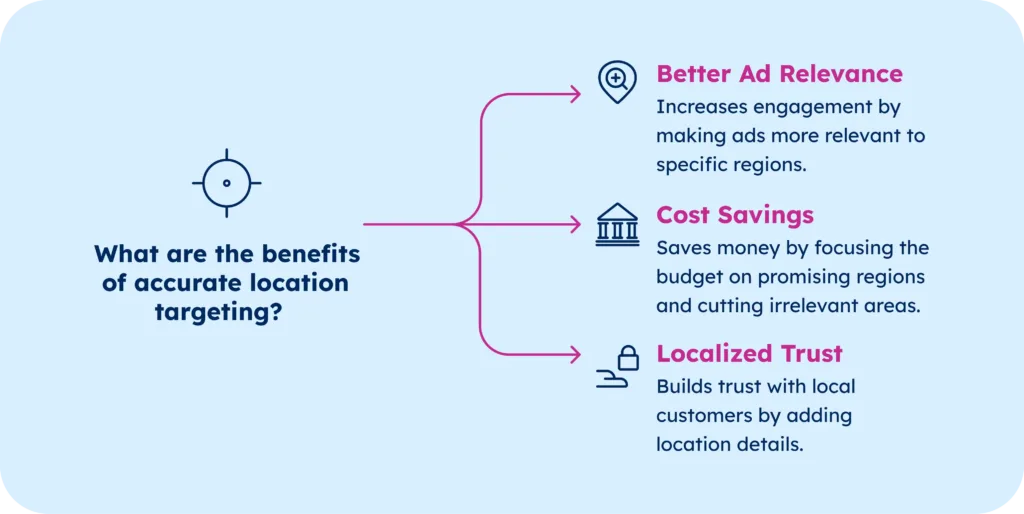
Image from GeoPostcodes
- Geofencing
Creating a virtual boundary or fences around a specific location. When a target customer’s location data pings within that particular perimeter, they receive messages, offers, or alerts upon entering or leaving that area.
Example: Burger King’s “Whopper Detour” campaign is among the most impactful uses of geofencing, offering customers a 1-cent Whopper if they were near a McDonald’s location, which drove 6 million app downloads and strong customer interaction.
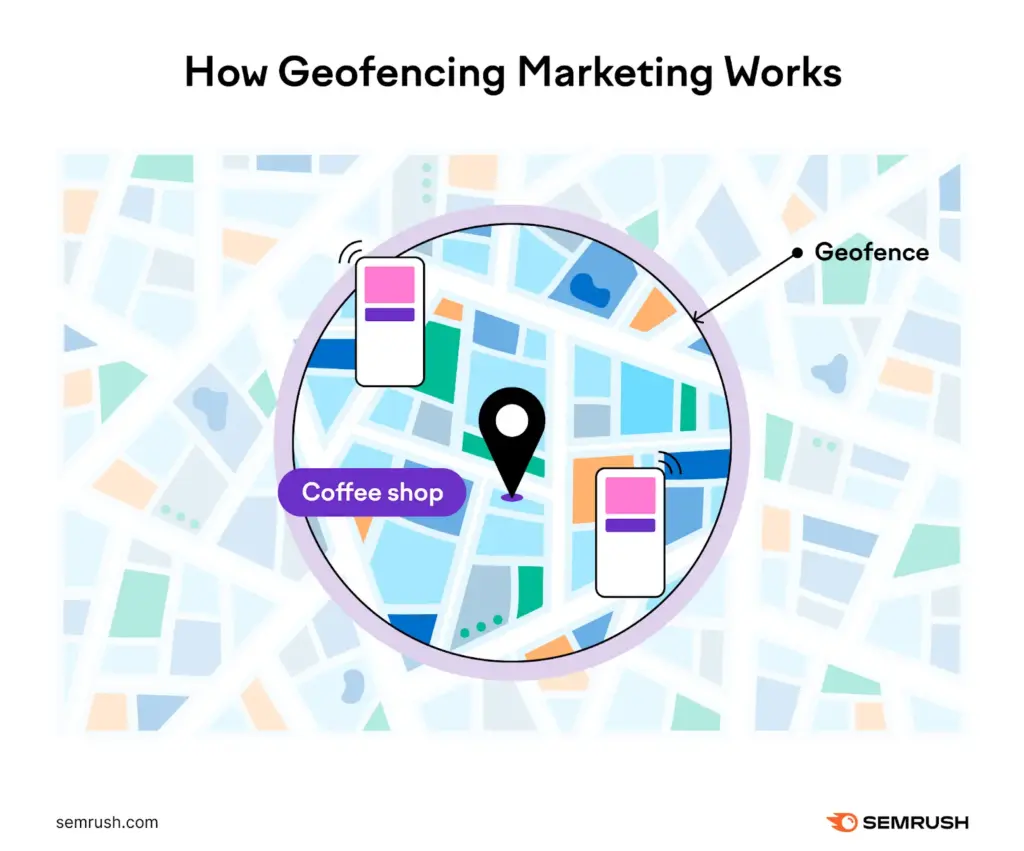
Image from Semrush
- Geo-Conquesting
A form of gamification that uses geolocation, encouraging engagement by rewarding users for visiting certain spots or competitors’ physical store locations.
Example: The Whopper Detour was also geo-conquesting because Burger King used McDonald’s locations as trigger points, turning its competitor’s foot traffic into an opportunity to attract customers to Burger King instead.
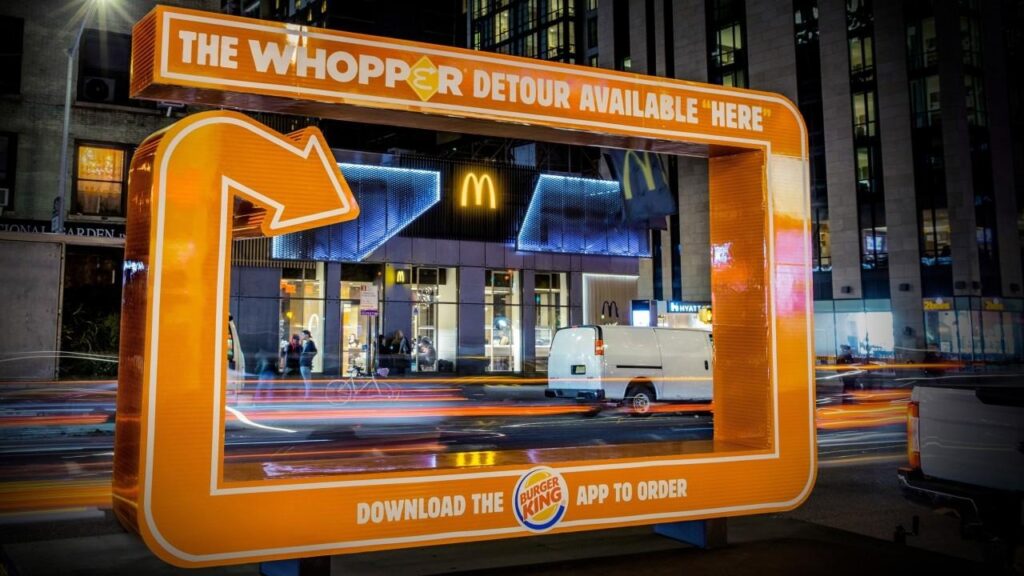
Image from LinkedIn
Top Benefits of Geolocation Optimization for Businesses
As more devices are now connected to the internet, from smartphones to cars to wearable tech, they collect location data that businesses can tap into. These insights help companies tailor their marketing efforts to deliver relevant offers and experiences exactly when and where customers need them. Here are some of the key advantages of location-based marketing:
1. Better Local SEO
Local search engines prioritize businesses that are visible in relevant areas. By integrating accurate location data into websites and digital profiles, companies increase their chances of appearing in “near me” searches. This is particularly relevant for firms investing in local seo services in the Philippines, where location-based searches dominate consumer behavior.
2. Higher Conversion Rates
Customers respond more favorably to content and offers aligned with their location. When businesses optimize digital experiences for local relevance, conversion rates increase. For example, a retailer promoting a sale to users within a specific city can experience higher engagement compared to generic nationwide campaigns.
3. Improved Advertising ROI
Advertising budgets stretch further when campaigns target precise locations. Optimized location ensures that ads reach the right audiences, improving efficiency and maximizing return on investment (ROI). Marketers can adjust messaging, promotions, and offers based on real-time location data.
4. Competitive Advantage in Local Markets
Businesses that invest in location strategies stand out in crowded markets. They reach audiences ahead of competitors that overlook localized marketing. Strong local visibility creates a significant edge, especially in industries like food services, retail, and tourism.
Essential Components of a Geolocation Optimization Strategy
To make geolocation optimization work, businesses need to focus on several interrelated elements:
- Google Business Profile Optimization
Maintaining accurate, comprehensive business listings is fundamental, as Google Business Profile (GBP) serves as a storefront in Google’s local search environment. Optimizing a GBP allows search engines to associate a company with specific locations, improving presence on Google Maps and in local search results.
- Location-Based Keyword Targeting
Incorporating geographically relevant terms enhances discoverability. For instance, a company offering digital services might target keywords such as “local seo company Philippines” to connect with audiences actively searching for providers within that region.
- Localized Content Creation
Creating content tailored to local audiences helps build stronger engagement. Blog posts, guides, or updates that highlight community events or regional trends establish trust and strengthen a brand’s local identity.
- Mobile Optimization Essentials
Fifty-eight percent (58%) of location-based searches occur on mobile devices. Mobile-friendly websites with fast load times and clear, intuitive navigation ensure a seamless user experience. Mobile optimization also enables features like click-to-call, maps integration, and location-aware notifications, which directly connect businesses with nearby audiences.
- Local Schema Markup Implementation
Structured data helps search engines interpret location-specific information about a business more effectively. Adding schema markup improves search visibility and strengthens the appearance of listings. It also increases the chance of generating rich snippets that attract higher click-through rates.
How to Implement Geolocation Optimization: Practical Steps
Executing geolocation optimization requires a structured approach. Businesses can follow these practical steps:
Step 1: Audit the Current Local Presence
Start by reviewing online listings, website content, and digital profiles. Identify inconsistencies or outdated location information that could negatively affect visibility. Addressing these gaps builds a reliable foundation for the rest of the strategy.
Step 2: Set Up Location Tracking
Implement tools to capture precise location data from users. Tracking can include GPS, IP-based detection, or Wi-Fi positioning to understand where the audience engages most.
Step 3: Create Location-Specific Landing Pages
Develop dedicated landing pages for each city, neighborhood, or region to strengthen search performance and user experience. Include localized content, address details, and contact information to increase relevancy.
Step 4: Optimize for “Near Me” Searches
Consumers increasingly use phrases like “near me” to find local services. Incorporating these terms into content and metadata can significantly boost local visibility and click-through rates.
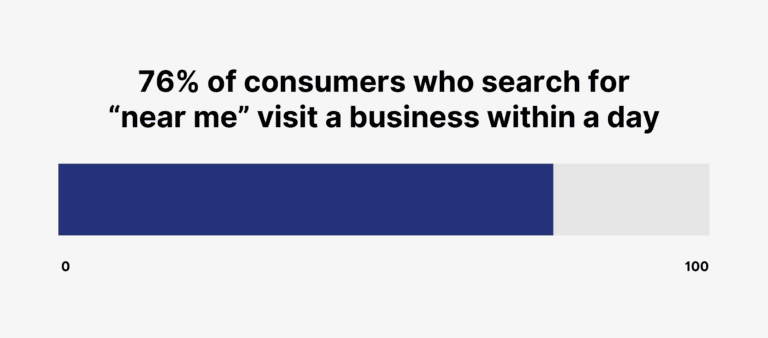
Image from Backlinko
Step 5: Multi-Location Strategies
Businesses with multiple branches must maintain consistent location data across platforms. Each location should have optimized pages, listings, and promotional materials that highlight its specific address, hours, and offerings.
Get Your Geolocation Optimization With DMP
Geolocation optimization is more than a technical adjustment. It is a strategic investment in visibility, customer connection, and local growth. Businesses that understand how location data shapes consumer behavior are better positioned to attract nearby customers, improve campaign performance, and build lasting customer relationships. Partnering with experts in local seo services in the Philippines ensures strategies are precise, efficient, and aligned with audience preferences and needs.
With Digital Marketing Philippines (DMP), businesses gain a partner dedicated to turning location data into powerful results. Our expertise allows brands to connect with nearby customers more effectively and create campaigns that truly resonate. We focus on building strategies that not only boost visibility but also encourage ongoing engagement and loyalty. Every campaign is carefully designed to deliver measurable growth and long-term impact.
Contact us today and let DMP help you maximize every opportunity where your customers are.
Quick FAQ Section: Geolocation Optimization
What is Geolocation Optimization?
It is the practice of tailoring digital content and marketing efforts based on users’ geographic location to enhance local visibility and engagement.
What tools track geolocation optimization?
Tools like Google Business Profile, geotargeting platforms, and location-based advertising services can help implement geolocation optimization strategies.
How can I evaluate the success of my geolocation optimization efforts?
Monitor metrics such as local search rankings, foot traffic, conversion rates, and customer engagement levels.
Can businesses without a storefront benefit from geolocation optimization?
Yes. Service-based businesses, delivery companies, and even digital firms improve targeting and advertising effectiveness with location data.
References:
https://outreachmonks.com/location-based-marketing/
https://www.shopify.com/ph/blog/location-based-marketing
https://mountain.com/blog/location-based-marketing/
https://www.indeed.com/career-advice/career-development/location-based-marketing
https://mailchimp.com/resources/what-is-geotargeting
https://www.semrush.com/blog/what-is-local-seo
https://www.semrush.com/blog/geofencing-marketing
Jomer B. Gregorio is a well-rounded expert when it comes digital marketing. Jomer is also known as a semantic SEO evangelist and practitioner. Check out our Digital Marketing Services today and let us help you in achieving positive and profitable results for your business.
